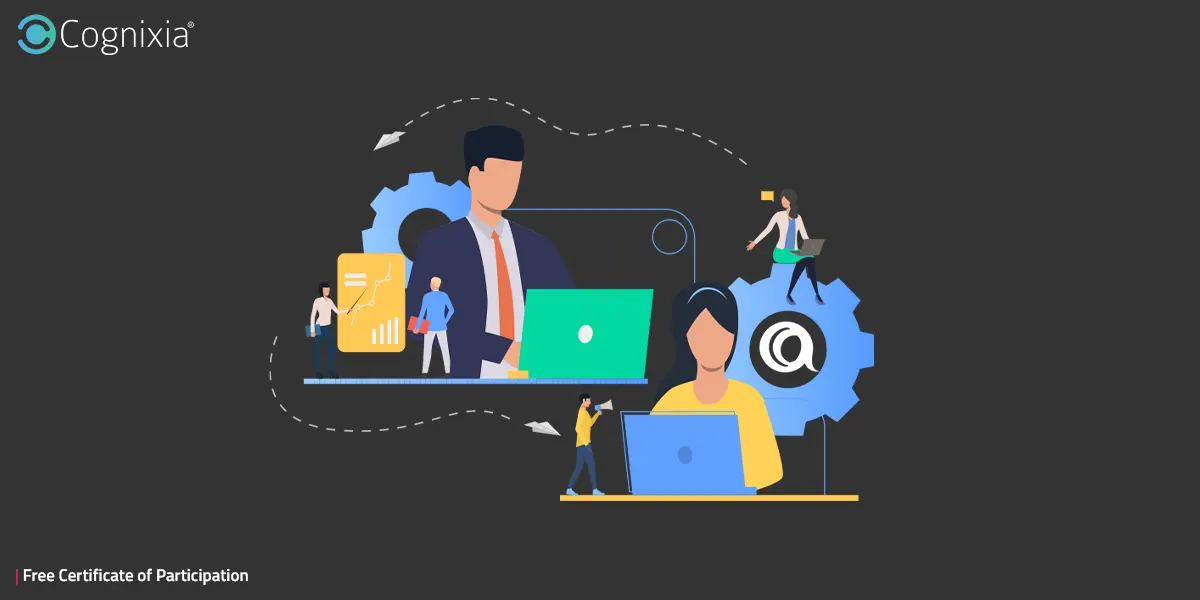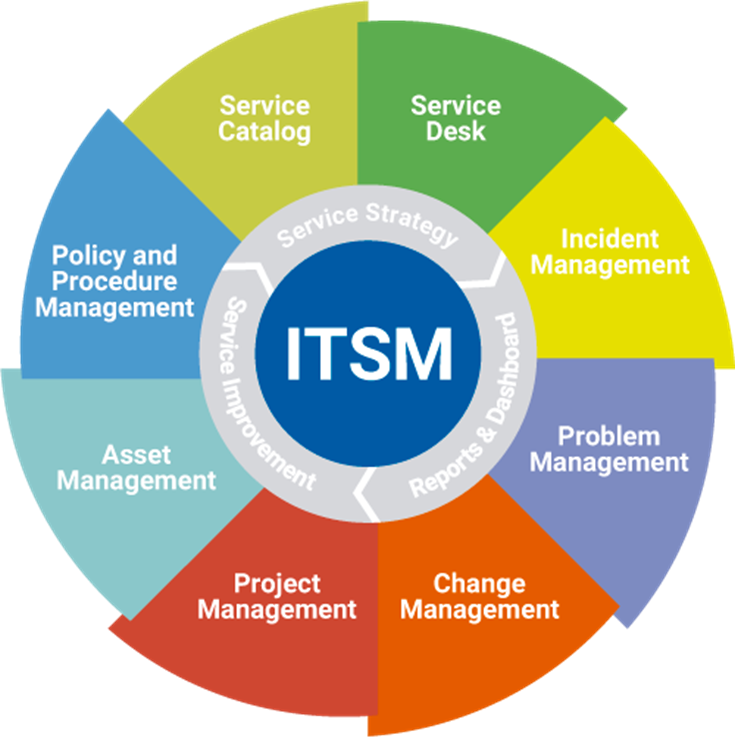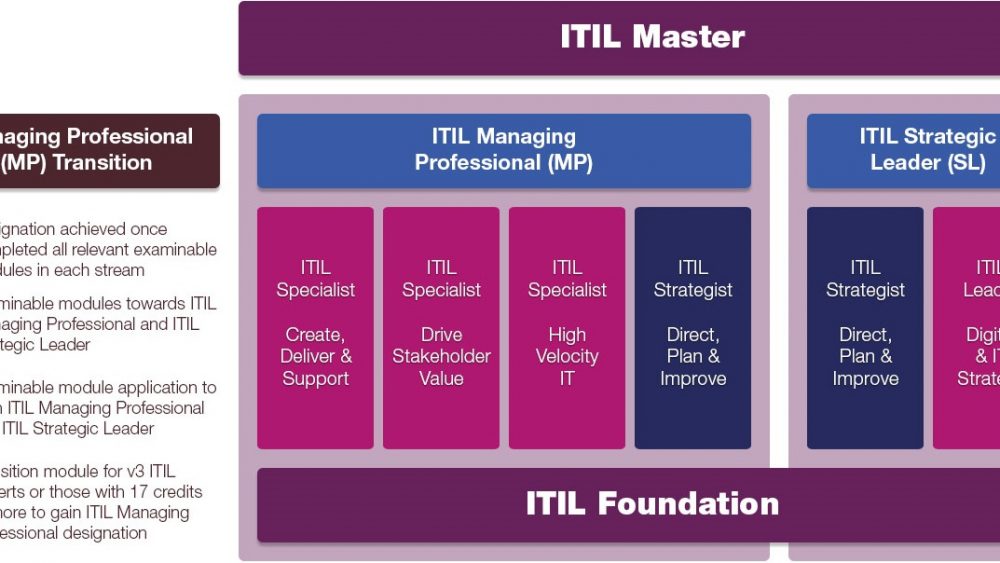“ITIL: Navigating the Modern Service Management Landscape
Artikel Terkait ITIL: Navigating the Modern Service Management Landscape
- The Dawn Of Seamless Interaction: Exploring The Power Of Smart Interfaces
- The Power Of Prediction: Understanding Computer Simulation
- The Rise Of The Machines: Understanding ASIC Chips And Their Impact
- The Heartbeat Of Now: Understanding Real-Time Computing
- Data Throughput: The Unsung Hero Of Digital Performance
Table of Content
Video tentang ITIL: Navigating the Modern Service Management Landscape
ITIL: Navigating the Modern Service Management Landscape

In today’s digitally driven world, businesses rely heavily on IT services to function, innovate, and stay competitive. Ensuring these services are delivered effectively, efficiently, and in alignment with business needs is paramount. This is where the IT Infrastructure Library (ITIL) framework comes into play. ITIL provides a structured and comprehensive approach to IT service management (ITSM), enabling organizations to deliver value to their customers and stakeholders.
What is ITIL?
ITIL, initially developed in the late 1980s by the UK’s Central Computer and Telecommunications Agency (CCTA), is a set of best practices for aligning IT services with business needs. It’s not a standard, a methodology, or a prescriptive set of rules. Instead, it’s a flexible framework that organizations can adapt and tailor to their specific circumstances and objectives.
Think of ITIL as a toolbox filled with proven processes, procedures, and guidance that can be used to improve the planning, design, delivery, and support of IT services. It provides a common language and a structured approach to managing IT, leading to improved efficiency, reduced costs, and enhanced customer satisfaction.
The Evolution of ITIL:
Over the years, ITIL has evolved to keep pace with the changing IT landscape. The latest iteration, ITIL 4, released in 2019, represents a significant shift from previous versions. While earlier versions focused primarily on process-centric approaches, ITIL 4 embraces a more holistic and value-driven perspective. It emphasizes collaboration, agility, and the integration of IT service management with other business practices.
Key Concepts of ITIL 4:
ITIL 4 is built upon several core concepts:

The Service Value System (SVS): The SVS is the overarching framework that describes how all components and activities of an organization work together to enable value creation. It encompasses the guiding principles, governance, service value chain, practices, and continual improvement.
The Four Dimensions of Service Management: These dimensions represent the key considerations that organizations need to address when managing their services. They are:
- Organizations and People: Focuses on the structure, roles, responsibilities, culture, and skills required to deliver services.
- Information and Technology: Covers the information, knowledge, and technologies used to manage and support services.
- Partners and Suppliers: Addresses the relationships with external providers and their role in service delivery.
- Value Streams and Processes: Focuses on how activities are organized, integrated, and coordinated to create value.


The Guiding Principles: These principles guide decision-making and provide a common understanding of how to approach service management. The ITIL 4 guiding principles are:
- Focus on Value: Everything the organization does should directly or indirectly contribute to creating value for the customer.
- Start Where You Are: Don’t reinvent the wheel. Leverage existing processes and resources, and build upon them.
- Progress Iteratively with Feedback: Implement changes in small, manageable increments, and continuously seek feedback to improve.
- Collaborate and Promote Visibility: Break down silos and foster collaboration across teams. Ensure that information is transparent and accessible.
- Think and Work Holistically: Consider the interconnectedness of all components and activities when making decisions.
- Keep It Simple and Practical: Avoid unnecessary complexity and focus on solutions that are easy to understand and implement.
- Optimize and Automate: Identify opportunities to streamline processes and automate repetitive tasks to improve efficiency.
Practices: ITIL 4 defines 34 management practices, which are sets of organizational resources designed for performing work or accomplishing an objective. These practices cover a wide range of activities, including incident management, problem management, change management, service desk, service level management, and many more.
Benefits of Implementing ITIL:
Implementing ITIL can provide numerous benefits for organizations of all sizes and industries, including:
- Improved IT Service Delivery: ITIL helps organizations to deliver more reliable, efficient, and effective IT services that meet the needs of the business.
- Reduced Costs: By streamlining processes and improving efficiency, ITIL can help organizations to reduce IT costs.
- Increased Customer Satisfaction: ITIL focuses on delivering value to the customer, which can lead to increased customer satisfaction.
- Improved Risk Management: ITIL provides a framework for identifying, assessing, and managing IT-related risks.
- Enhanced Compliance: ITIL can help organizations to comply with regulatory requirements and industry standards.
- Better Alignment with Business Goals: ITIL helps to align IT services with the overall business goals and objectives.
- Standardized Processes: ITIL provides a common language and a structured approach to managing IT, leading to standardized processes across the organization.
- Improved Communication and Collaboration: ITIL promotes communication and collaboration between IT teams and other departments.
Implementing ITIL:
Implementing ITIL is not a one-size-fits-all approach. Organizations need to tailor the framework to their specific needs and circumstances. Here are some key steps to consider:
- Assess Your Current State: Identify your current strengths and weaknesses in IT service management. Conduct a gap analysis to determine where you need to improve.
- Define Your Goals and Objectives: What do you want to achieve with ITIL? Set clear, measurable, achievable, relevant, and time-bound (SMART) goals.
- Prioritize Your Efforts: Focus on the areas where you can make the biggest impact in the shortest amount of time.
- Develop a Roadmap: Create a plan that outlines the steps you will take to implement ITIL, including timelines, resources, and responsibilities.
- Train Your Staff: Ensure that your IT staff is properly trained on ITIL principles and practices.
- Implement Changes Iteratively: Don’t try to implement everything at once. Start with small, manageable changes and gradually roll out new processes and procedures.
- Monitor and Measure Your Progress: Track your progress against your goals and objectives. Use metrics to identify areas where you need to make adjustments.
- Continuously Improve: ITIL is a journey, not a destination. Continuously seek feedback and look for ways to improve your IT service management practices.
ITIL Certifications:
For individuals looking to enhance their knowledge and skills in ITIL, there are various certifications available. These certifications demonstrate a commitment to best practices and can be valuable for career advancement. The ITIL 4 certification scheme includes:
- ITIL 4 Foundation: Provides a general awareness of the key concepts of ITIL 4.
- ITIL 4 Managing Professional (MP): Focuses on the practical application of ITIL 4 practices and the skills needed to manage and improve IT services.
- ITIL 4 Strategic Leader (SL): Focuses on the strategic aspects of IT service management and how to align IT with business goals.
Conclusion:
ITIL is a powerful framework that can help organizations to improve their IT service management practices and deliver greater value to their customers. By embracing the principles and practices of ITIL, organizations can enhance their efficiency, reduce costs, and improve customer satisfaction. While implementing ITIL requires commitment and effort, the benefits are well worth the investment. In today’s competitive landscape, effective IT service management is essential for success, and ITIL provides a proven roadmap for achieving it.
FAQ: ITIL Framework
Q: Is ITIL a standard or a methodology?
A: ITIL is neither a standard nor a methodology. It is a framework of best practices that organizations can adapt and tailor to their specific needs.
Q: Is ITIL only for large organizations?
A: No, ITIL can be beneficial for organizations of all sizes. The key is to adapt the framework to the organization’s specific needs and resources.
Q: What is the difference between ITIL 3 and ITIL 4?
A: ITIL 4 is a significant evolution from ITIL 3. ITIL 4 is more holistic, value-driven, and emphasizes collaboration, agility, and the integration of IT service management with other business practices. ITIL 3 was more process-centric.
Q: How do I get started with ITIL?
A: Start by assessing your current state, defining your goals, and prioritizing your efforts. Then, develop a roadmap and train your staff. Implement changes iteratively and continuously monitor and measure your progress.
Q: Do I need to implement all of the ITIL practices?
A: No, you don’t need to implement all of the ITIL practices. Focus on the practices that are most relevant to your organization’s needs and priorities.
Q: What is the ITIL Service Value System (SVS)?
A: The SVS is the overarching framework that describes how all components and activities of an organization work together to enable value creation.
Q: What are the ITIL Guiding Principles?
A: The ITIL Guiding Principles are: Focus on Value, Start Where You Are, Progress Iteratively with Feedback, Collaborate and Promote Visibility, Think and Work Holistically, Keep It Simple and Practical, and Optimize and Automate.
Q: How can ITIL help my organization reduce costs?
A: ITIL can help organizations reduce costs by streamlining processes, improving efficiency, and reducing downtime.
Q: How can ITIL help my organization improve customer satisfaction?
A: ITIL focuses on delivering value to the customer, which can lead to increased customer satisfaction. By improving service quality and responsiveness, ITIL can help organizations to meet and exceed customer expectations.
Q: Where can I get more information about ITIL?
A: You can find more information about ITIL on the AXELOS website (the official home of ITIL) and through various training providers and online resources.
Conclusion:
ITIL, in its latest iteration ITIL 4, is more than just a set of best practices; it’s a strategic framework for aligning IT with business value. Its emphasis on collaboration, agility, and continual improvement makes it a powerful tool for organizations navigating the complexities of the modern digital landscape. By adopting the principles and practices outlined in ITIL, businesses can transform their IT departments from cost centers to value drivers, ultimately achieving greater success in a competitive market. The key to successful ITIL implementation lies in tailoring the framework to the specific needs and context of the organization, embracing a culture of continuous improvement, and empowering teams to collaborate and innovate. The future of IT service management is value-driven, and ITIL provides the roadmap to get there.



